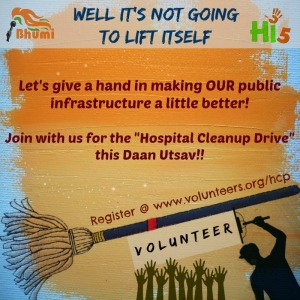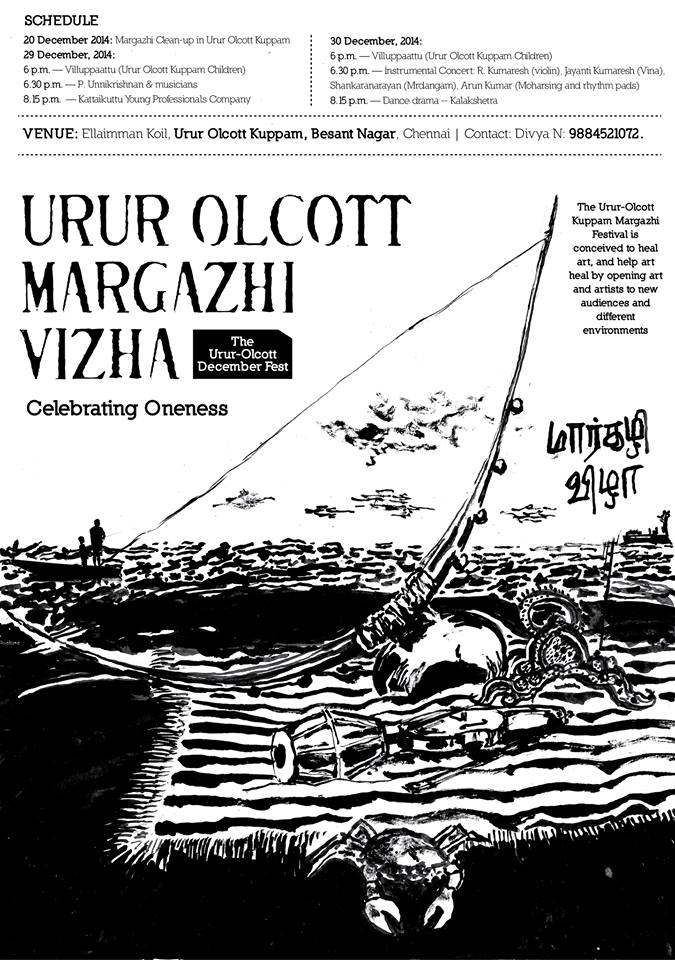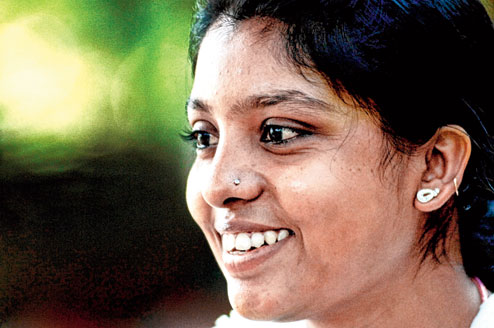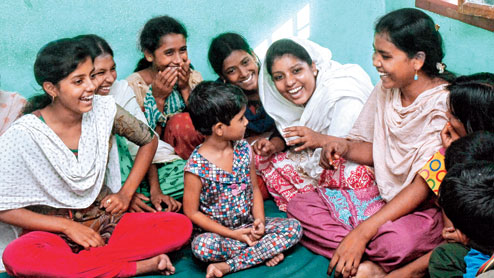Category Archives: Uncategorized
Reclaim Our Beaches – Urur Kuppam Beach Cleanup | Chennai | Dec 20
Background:The Urur-Olcott Kuppam Margazhi Festival is conceived to heal art, and help art heal by opening art and artists to new audiences and different environments.
The 2014 debut event of the Urur Olcott Kuppam Margazhi Festival is being held in the spirit of Margazhi, of celebration, and recognising the power of art in evoking the oneness of life and the samenesses of human societies.
India Fellow – Applications now open
We invite passionate young Indians who are looking for a platform to make a positive social impact and while some may see them as the crazy ones, we see genius! Graduates or above from any discipline and aged between 20 to 28 years can apply. We aim to have a cohort comprising of a diverse pool of talent from a wide range of professional and academic backgrounds.
Get first hand experience of ground challenges immersing with grassroots organizations spread across the length and breadth of the country. Get supported throughout the journey with trainings, reflection meets and mentor-ship. As you embark on a career of social change, you will find this network of co-fellows, alumni, trainers, organizations and mentors extremely valuable. Ideas will be created, everyday you will know yourself a little better, you will discover what you want to do with your own lives and learn to turn your ideas into reality. Read the thoughtful blogs by our fellows who are currently on the field experiencing all of this at Fellow Blogs.
India needs talented young leaders who have deep exposure to India’s broader realities; who understand the challenges and opportunities present in diverse environments; who have the empathy, skills and determination to create social good. India Fellow is a platform which helps you discover your own journeys towards becoming Socially Conscious Leaders of tomorrow.
The program has 3 tightly knit components of Training, Grassroots Work and Mentorship.
– Training on design thinking, development theories, management topics and personal leadership styles and skills
– Travel workshops and rural immersions for accelerated learning and gaining better perspectives
– Peer learning and sharing with co-fellows and networking with mentors, subject matter experts, alumni and NGOs
Volunteer Hero – Anoyara Khatun
Our very own Malala: trafficked at 12, crusader and global Girl Hero at 18.
Anoyara Khatun was all of 13 when she led an army of children across a canal at midnight, caught a trafficker and saved a family on the verge of losing their teenage daughter to a trafficking ploy in the name of marriage.
She has since managed to save at least 50 minor girls from child marriage.
n A few months after her first act of courage, Anoyara managed to pin down a trafficking tout along with a battalion of children and taught him a lesson he would find hard to forget.
Till date, she has foiled nearly 85 trafficking attempts, helped rescue and reunite more than 200 children with their families and got 200 dropouts back into school.
n The following year, when former education minister Kanti Biswas was on his way back from a village in Sandeshkhali in the Sunderbans, Anoyara and her army of kids trooped in, blocked his path and forced him to accede to their demand to build more schools in the village.
Today, Sandeshkhali has 84 schools.
The first thing that strikes you about Anoyara, 18, is that her eyes speak. They are large, luminous and transfix you at once.
Anoyara with members of one of the children’s groups that she leads in the crusade against trafficking and child marriage. Pictures by Bishwarup Dutta
She is seated on a stool outside the Dhagagia Social Welfare Society’s office in Sandeshkhali, her face radiant in the afternoon sun as she contemplates the world around her.
“Don’t you think this place is beautiful?” she asks, her eyes scanning the expanse of green on one side and the water bodies on the other.
She is clearly in love with the hinterland to which she belongs and has taken upon herself to protect.
Her world wasn’t always so beautiful. It couldn’t have been after being trafficked at 12.
But this powerhouse of a girl from Chhoto Askara, a tiny village that is part of Bengal’s most trafficking-prone belt, isn’t the type to dwell in the past. Anoyara has not only left her private hell behind but also rebuilt her life as an activist leading an army of children who battle trafficking and child marriage in quirky little ways.
Her courage and commitment to protecting the girl child has been widely recognised, the biggest honour coming from the foundation led by Nobel Peace Prize winner Malala Yousafzai.
Anoyara is one of the “Girl Heroes” from across the world that the Malala Fund is currently celebrating for 30 days — from October 11 to November 9 — as a beacon of “exemplary courage and leadership”.
The Malala Fund, which focuses on helping girls go to school and raise their voices for the right to education, has tagged Anoyara as “#StrongerThan Social Ills like Child Trafficking and Early Marriage” and anointed her a “true Girl Hero”.
But long before Anoyara emerged as a force against exploitation, she had to grapple with a dark and traumatic phase in her life.
Born in 1996 as the youngest among four siblings — three sisters and a brother — Anoyara lost her father when she was five. Her mother began working as a cook in a local school to feed the family but life was hard.
“I was going to school but had to drop out when I was in Class VI,” recalls Anoyara, who doesn’t like to revisit her past. “I don’t like to talk about what I have left behind. I like to talk about how I am moving forward in life,” she says with a conviction nobody can defy.
Anoyara was barely 12 when she was trafficked to Delhi and forced into domestic labour, a hellhole she managed to run away from after a year. The transition from victim to victor was quick, a trait that has since defined her work as an activist.
Anoyara reels off a list of activities she and her children’s groups in the area have been involved in to spread awareness among villagers about child marriage and trafficking.
We also learn that she is now the leader of as many as 80 children’s groups across 40 villages in Sandeshkhali.
These groups are all affiliated to Save the Children and the Dhagagia Social Welfare Society-run multi-activity centre, which Anoyara had joined when she was 13.
“There were only 10 groups when I joined and then I got more girls like me to join in. Now there are more than 1,600 children and I keep track of all of them!” she smiles, holding up the Nokia C1 phone that she uses to keep in touch with her groups.
“I got this (the phone) three years ago as a prize in Ranchi. It helps me in my work because I can connect with people and children’s groups can call me any time.”
For a fleeting moment, the child in the 18-year-old surfaces. “We don’t have a television at home but I can listen to songs on this phone. Nachiketa and Shreya Ghoshal are my favourites,” Anoyara says, breaking into a smile.
She quickly goes back to describing how her groups operate around Sandeshkhali I and II and Minakhan, quizzing families on the whereabouts of children they have married off or sent out with strangers to work. “You know, my sisters were all married off at 13 or 14. None of us knew anything about child marriage at the time. For us, it was a custom,” she recounts.
Her sharp eyes soften as the conversation delves deeper into the subject. “When you endure a lot of pain, trouble and misery, you take it as a challenge to overcome that. Adversity was my driving force. I realised that if I didn’t bounce back from my ordeal, many more girls from Sandeshkhali would go missing. It became a mission and a challenge to myself to put a stop to exploitation of children and keep them from falling into the dangerous trap of trafficking or child marriage.”
But turning pain into power was far from easy for Anoyara, who had just stepped into her teens when her mission began.
“Before reaching out to people in the villages, I had to convince my own family to allow me to step out of the house. I reminded them of the pain they had gone through when I was away and how important it was to get other families to realise the dangers too,” she says.
Breaking the ice with villagers indifferent to “worldly advice” from a bunch of “precocious children” was the next challenge. “They would say, ‘What do you kids know? Who are you to tell us?’ It was difficult to get the elders to pay attention to us but we never gave up. We would keep visiting them endlessly till they were convinced and clear about what we as children were trying to tell them.”
Anoyara’s courage came to the fore when she saved a girl from the clutches of touts and captured the men with help of a group of children her age. “In our village, people go to sleep by eight and children aren’t allowed outside. I managed to get out of the house, take some friends along, chased the traffickers across the village, jumped canals and caught them. It was a huge risk but it changed the way elders looked at us.”
She went on to become a role model in her village and the adjoining areas, employing out-of-the-box strategies for her children’s army to stalk, spot, seize and hand over traffickers to the authorities.
“Our first rule is to follow any outsider we see in the village and pass the message to each other at the multi-activity centre. If we find them going into a house, two or three of us will playfully saunter in, hang around, eavesdrop on the conversation and then come back and report to the group,” she reveals.
“If we realise that the person has wrong intentions and could be a potential trafficker, we immediately meet the child in question and explain why they should not go away with the stranger. Then we go and meet the family as a group to help them understand too. And if we find them running away with a child, we will drag them to the centre of the village and tie them up.”
While some traffickers mend their ways and even join the child protection committees in the villages, others don’t dare enter Anoyara’s territory again.
She takes you to a multi-activity centre to meet one of the children’s groups with a spring in her step, smiling at the children who squeal: “Didi! Didi!”
“How are you? Have you eaten? Why are you looking glum? Smile!” Anoyara tells the children, later joining them in a game of Chinese Whispers.
Keya Parvin, a 15-year-old member of one of the children’s groups, has something to tell us. “Do you know that once we children raided a wedding and stopped a family from marrying off a child? We have learnt so much from Didi. All of us want to be like her.”
The advantages of being a child activist are many, according to Anoyara. “Children will always be the first ones to know. And a child will always listen to someone her age and treat her like a friend. An adult would most likely try to instruct,” she says.
“Everyone from Maulvis and Brahmins to village heads and the police listen to us now. But that doesn’t mean we are rebels. We respect elders.”
Anoyara had been nominated for The International Children’s Peace Prize in 2012, an award that went to Malala the next year. Last June, she travelled to Brussels to represent Save The Children in a Global Partnership for Education conference.
“Aamar passport hobey, bideshey jabo…bhabtei parini (I couldn’t have imagined that I would have a passport and go abroad). I loved the glass buildings and ate a lot of chocolates. I also met Malala’s father,” recalls Anoyara, who idolises Malala.
“I want to be like her someday. I was so happy the day she won the Nobel. I keep news clippings of her whenever I find one.”
While Anoyara aspires to be like Malala, nothing gives her more satisfaction than bringing a missing girl back home or stopping a child marriage.
She has made it a ritual to organise a big children’s party whenever a trafficked child returns to Sandeshkhali. “We collect money and organise a feast of dal, bhaja and egg curry at the multi-activity centre. We sing, dance and play from morning till evening. And then, like a friend, we get the rescued child to talk to us, share her misery and join our group.”
For Anoyara, the joy comes from providing the love and protection that she had once yearned for. “What I didn’t get I try to give to others,” she says.
Alongside her busy schedule, Anoyara is studying for her graduation in a local college. She is the first from her village to go this far.
An average day in her life means waking up at 6am, reading namaz and tutoring 25 children before leaving for college. Back home by 4pm, she goes around her village checking on the children.
Like most teenage girls, Anoyara loves her trinkets, kajal and the colour pink. The one thing that irks her is the idea of keeping pets. “I love cats and dogs but I don’t like the idea of caging anyone, be it animals or humans. They should all be set free.”
Her refuge from the nightmare of being caged is a little diary full of songs and poems. They are all about human trafficking and tell you a bit about her suffering as a child. “Mon kharap holei aami likhi (I write when I am sad),” she says.
Her ambition is to learn English, computers and cycling. “I think these will make me braver,” she says, not bothering to elaborate.
Once again her eyes do the talking.
Whom Don’t We Ask to Volunteer?
We all know the common wisdom (backed up by research, actually) that the number one reason people volunteer or give money is because they were asked. In other words, there is a big difference between knowingthere are ways to be philanthropic and feeling invited to participate. Never confuse publicity with recruitment.
Last month I shared Ten Time-Tested Volunteer Recruitment Tips that Still Work. This month I want to examine the potential volunteers we rarely attract for three reasons:
- We do not recognize them as talent pools or as people who would be interested in helping us.
- We internally edit ourselves by feeling they are somehow out of our reach, and so we never ask them.
- We aren’t sure how to approach them, so we don’t. And perhaps we are not sure if we will be able to design work for them or support them as needed.
By not tapping the widest circle of people in the community to join us as volunteers, everyone loses. Our organizations never gain the wealth of skills out there and the uninvited potential volunteers are denied all the benefits of donating their time and talent.
Who Is Overlooked
 Naturally, there are many volunteer resources managers who are fantastic at casting a wide, inclusive net when they seek volunteers. And, many people who are under-recruited do find ways to contribute their time. My point here is to encourage you to reflect on your own attitudes and beliefs. Do you truly see the populations below as prospects for your volunteer corps? Have you intentionally attempted to recruit them? What is blocking you from trying – or perhaps what is blocking them from saying yes?
Naturally, there are many volunteer resources managers who are fantastic at casting a wide, inclusive net when they seek volunteers. And, many people who are under-recruited do find ways to contribute their time. My point here is to encourage you to reflect on your own attitudes and beliefs. Do you truly see the populations below as prospects for your volunteer corps? Have you intentionally attempted to recruit them? What is blocking you from trying – or perhaps what is blocking them from saying yes?
The Rich
Like bank robbers, fundraising professionals go where the money is. Of course this makes a lot of sense. But too often we buy into the mistaken belief that rich people don’t want to get involved beyond writing a check.
When was the last time you partnered with your development staff to invite financial donors – especially the big ones – to get more personally involved with your cause? If they support you with money, they must care about your mission. Wouldn’t they like to see your organization in action on the front line? Don’t they have other potential skills to offer beyond check-writing? What about other people in their family?
I acknowledge that it is a hard sell to get fundraising staff to like this idea, since they almost always guard the names of donors like state secrets. The point is to develop an outreach strategy together, at least mentioning volunteer opportunities along with the next pitch for a donation. We are talking about baby steps, such as asking donors if they’d like to help at a special event, usher one performance, paint one room.
The Poor
Then there is the opposite side of the economic spectrum. Most research reports that lower income people and those without higher education are less likely to volunteer. But correlation is not causation. I submit that we tend to avoid recruiting from low-income areas, so it’s another case of “they were not asked.”
First, there is an enormous amount of self-help, collaboration, and barter going on in disadvantaged communities. These may not be activities that anyone consciously recognizes or labels as “volunteering,” but that does not matter. Shared child care, community gardens, exchange of services, and more occur naturally out of need. Serving others is a form of self-esteem. Never assume that a low income means an unwillingness to help or that the person has no useful skills to offer.
I have covered this theme in two past Hot Topics: Both Receiving and Giving andLessening Social Exclusion through Volunteering. I still feel strongly about the points I outline in these essays and hope you will revisit them to consider your point of view on the subject.
Our Clients/Consumers
Only some organizations provide services to the poor, but all have been created to address some social or community need. That means that every citizen is potentially a client of some organization somewhere, sometime. Your paid staff and volunteers are undoubtedly getting some sort of assistance or service right now from another provider for needs unconnected to your services to others. So why can’t your clients also be volunteers with you?
In the two Hot Topics linked above, I also discuss ways to engage clients in self-help activities, especially facilitating mutual support among the families and friends traveling on the same path as the primary client.
Depending on the type of service you offer, it might make more sense to wait until your clients finish their program, treatment, whatever and approach them to return as alumni volunteers. It’s a way to pass it forward and even celebrate their success.
Blue-Collar Workers
Why is it so acceptable to ask an accountant or lawyer to serve on a board or a trainer to conduct a workshop at no fee, but we simply pay the bills we get from plumbers, carpenters, electricians and the like in cash? Why do we assume that a person who earns a living with his or her hands would not consider donating those services just as someone in a white-collar profession might? There has to be a personal connection to the cause, of course, but…if you don’t ask, you cannot get.
A variation on this is recruiting blue-collar workers for service other than the physical labor they are employed to do. Youth mentoring programs might better serve their youngsters by matching them with successful repair people or cashiers than with lawyers or homemakers. People who work outside of the professions may be more realistic role models, as well as relate better to their match.
High-ranking Corporate Officers
Business executives are frequently considered prospects for serving on a nonprofit board of directors, but if their company sponsors an employee volunteer program, the activities there tend to focus on lower-level workers. Why?
University Faculty
In the same vein, we all troll university campuses to recruit student volunteers, but what about their teachers and administrative personnel? (This also holds for public and private school teachers and principals.) The faculty has a long-term interest in the community because they are permanent residents, not semester transients. And while their academic expertise might offer potential for your organization, they are ordinary people with all sorts of outside interests, too.
Children and Young Teens
The first edition of our book, Children as Volunteers, came out in 1983. It still amazes me how many people will stand at a book table with their hands behind their backs, see this title, and say “oh, we can’t involve children.” Well, if you servechildren, you ought to consider engaging other children as advisors and sounding boards. Even if they cannot provide direct service, children may be able to educate others, such as speaking in a video about how they felt during a medical procedure or when a parent died. They may be able to give support to peers who are facing the same thing. They might undoubtedly be able to teach the staff how to make the most of a smartphone or other technology!
I’m not recommending hosting 42 six-year-olds at one time. Even one or two capable kids might make a real contribution. And there’s always family volunteering to try, urging parents to bring along their children when visiting clients/patients, helping at fundraising events, and other work the kids can do. [It should be noted that, despite a lot of talk about family volunteering, I keep hearing from parents that it is almost impossible to find such opportunities in reality. That’s our fault, not theirs.]
Men…or Women
Of course both women and men volunteer, even if the men refer to themselves as coaches, trustees, and firemen! For the purpose of this essay, I am questioning why so many organizations have, over time, evolved a single-gender volunteer corps…and then assume this is the way it has to be.
If you have far too many women, ask yourself why. Do you tend to name things to appeal to women, fundraise only with jewelry, and show only female faces in every photograph on the Web or in the newspaper? You may need to actually say: “Men welcome.”
All-male organizations have famously resisted the involvement of women, sometimes even going to court to remain segregated. But if your group is more than willing to welcome females, ask some to join!
This may be a good place to note that I never recommend token recruitment. The point is not to add a few men or a few women to your roster. It’s to find the rightvolunteers with the skills and commitment you most need, looking for those people in a way that diversifies your talent pool.
But, But, But…
I am certain that readers will come up with all sorts of concerns about many of these populations. Some will be valid. An organization is not required to enroll representatives of every single demographic, and there may truly not be a good fit based on what the organization does or whom it serves. It may take some effort or adaptation to welcome new types of volunteers, or even preparing the volunteers who are with you now.
The question is: Do you see talent everywhere and invite potentially great volunteers into your organization? Consider where you recruit and what your expectations are of what applicants will look like. Don’t limit your outreach and you’ll be rewarded.
- Have you done outreach to a new population and been happy with the results? Or been unsuccessful? Please share.
- What other under-tapped populations should we be considering (there are definitely more I didn’t have space to include)?
Cross posted from Whom Don’t We Ask to Volunteer? By Susan J. Ellis
Daan Utsav 2014 | Hospital Cleanup | Chennai
Daan Utsav (or Joy of Giving Week) is India’s “Festival of Giving” celebrated every year from October 2 to 8 that brings together Indians from all walks of life, to celebrate ‘Giving’. 20 lakh volunteers participated in events across 80 cities, raising tens of crores in resources and millions of volunteer hours during Daan Utsav 2013.
 |
Government Royapettah Hospital
|
Think Green – Saplings maintenance, Kanchipuram: Sep 21| CTC Ainthinai
Chennai Trekking Club – Ainthinai team has created a perfect eco system with Support from Tamil Nadu Forest dept around the Ayyangarkulam lake by planting 250+ saplings and maintaining them with the efforts of local village folks. Two weeks ago HP with help of Tamil Nadu Forest dept have plabted 900 saplings. Those saplings need to be protected from grazing. On September 15th, around 25 volunteers from CTC manured for over 100 saplings and set up Tree guards. Remaining saplings need our help for further growth.
When & Where : Ayyangarkulam ,Kancheepuram
20th Sep 2014 – Night camping at Lake (Optional)
21th Sep 2014 : Plantation and maintenance : 06:00 am to 11:00 am
Agenda: Day – I Saturday (Optional)
1) Leaving from chennai by 4pm
2) Reach Kancheepuram by 6pm
3) Walk around the villages,lake,temple and camp at the lake
Day -II Sunday | 06:00 am to 11:00 am
1) Mulching,Watering,Setting up Tree guards
2) Visit some ancient monuments nearby and Leave for Chennai by 12 pm with satisfied heart 🙂

Selection criteria: All are welcome
Cost and Transport: Rs 70 for food.
Transport cost will be shared by volunteers based on the pooling (car, bike or Bus)
CTC will arrange for pooling
Must Carry:
1) Comfortable Clothing, Shoes/Sandals.
2) Reusable, Filled Water Bottles.
3) Cap, Sun Screen, Camera- if required.
4) Blanket for the night stay
-> “The event is not organised by volunteers.org or Bhumi”
-> “Participants must read and sign CTC event disclaimer”
-> “CTC is a non-profit group and accounts will be shared transparently with all participants”
-> “Participants who engage in irresponsible, disrespectful or unsafe behavior will be blacklisted from future CTC events”
-> “Feedback or complaint from any CTC member on the group, event, organizer, safety or accounts can be raised to the [email protected]”
Benefits of Volunteering – Increases chance of getting a job
If you are job hunting, or just looking around for new opportunities, you have probably spent a lot of time recently tending to your LinkedIn profile. Updating your experience. Joining new groups. Building your network. But what if I told you there is something else that you probably aren’t doing which could dramatically increase your odds of getting a job? It’s not about getting a graduate degree, and it’s not even about learning a new skill.
According to the research, the smartest and most often overlooked thing you can do to get ahead in the competitive job market is to start giving back. That’s right. If you want to improve your odds of getting your dream job, it is time to start volunteering.
Here are the facts.
This summer, researchers at the Corporation for National and Community Service, released new findings that tracked the relationship between volunteering and employment for a group of 70,535 respondents over a ten year period.
According to Dr. Chris Spera, CNCS’s Director of Research & Evaluation and one of the authors of the report “Volunteering as a Pathway to Employment,“ active volunteers were 27% more likely to get a job than non-volunteers. And the relationship held stable across gender, race, ethnicity, age, location, and unemployment rate. That’s a big difference.
Underlying the findings, Spera and his team believe there is a strong relationship between volunteering and the development of social and human capital — key attributes in today’s most desirable candidates.
The findings echo a recent LinkedIn survey of 2,000 professionals which found that 41% of respondents consider volunteer experience to be as important as work experience for job candidates. The survey also found that 20% of hiring managers have offered jobs based on a candidate’s volunteer experience.
So what are you waiting for? If you need some help getting started come visit us at www.bhumi.org.in. And once you’ve found a great place to volunteer add it to your LinkedIn profile and let the job hunting begin.
(Cross posted: Original article by Greg Baldwin,VolunteerMatch on LinkedIn)







